Snapshots of Our World: Agriculture
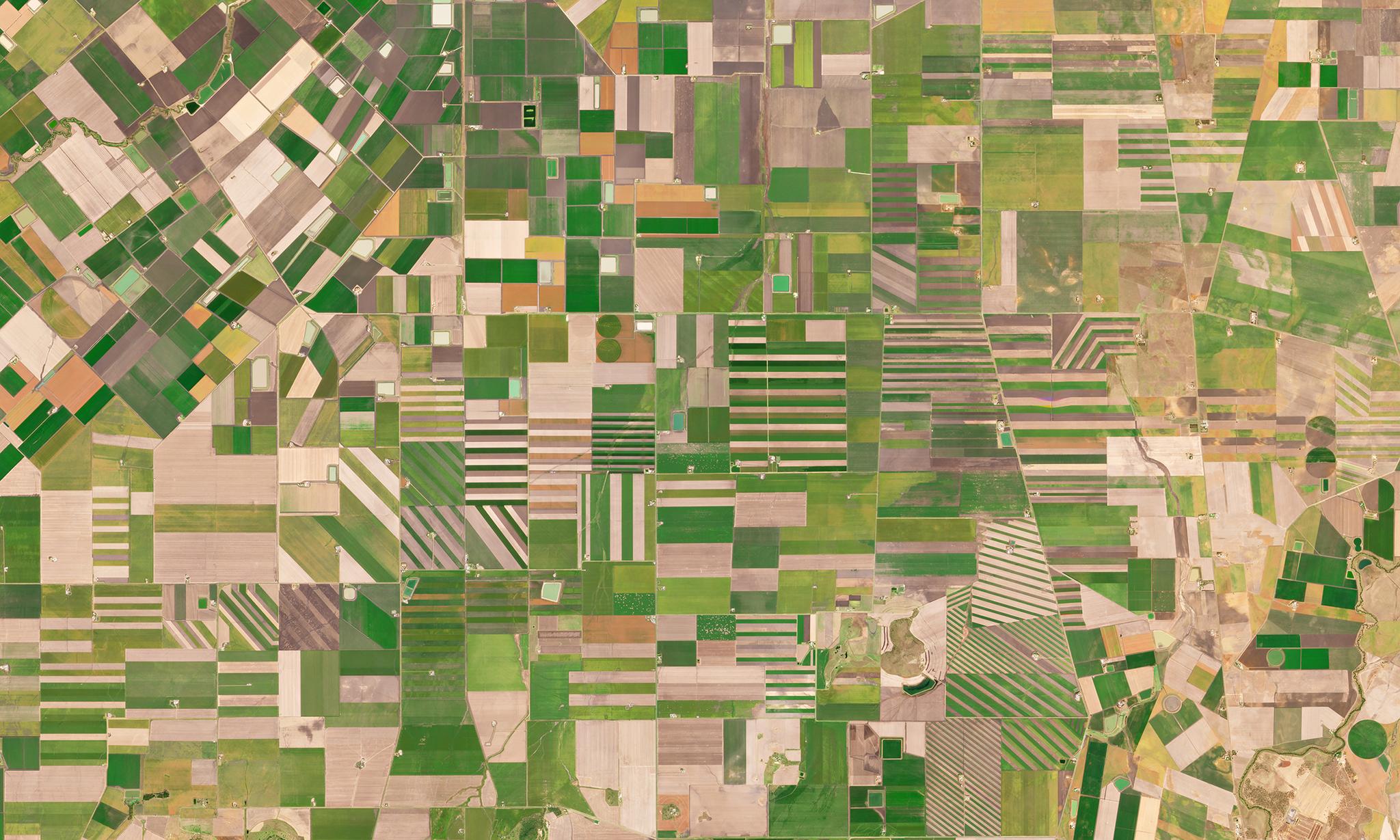
PlanetScope image of crop fields in Bongeen, Queensland, Australia taken February 10, 2023. © 2023 Planet Labs PBC. All Rights Reserved.
StoriesHere at Planet, we capture snapshots of our world everyday. A lot of them. But sometimes the message from space isn’t clear. Our weekly newsletter, Planet Snapshots, makes understanding satellite images and the stories they reveal easy. We’re kicking-off 2024 by sharing a select number of issues here on Pulse, so keep an eye out for these eye-opening stories that explore our changing world.
Agriculture’s formula is pretty similar no matter which part of the world you’re in: settle down, work the land, reap what you sow, and build a surplus. The first iteration of this formula took place some 12,000 years ago and its principles remain largely the same today. What has changed is the dramatic increase in its scale. Most of the nearly 8 billion people on Earth eat food that’s evolved to be larger, industrially produced, and mechanically harvested. Populations rise and fall depending on food supply. Where plants can’t live, humans fare no better.
Agriculture’s central challenge has long been how to produce more from the same amount of land. And each key inflection point has been associated with a revolution. In the 20th century, we overcame food insecurity crises through the application of innovative technologies: nitrogen fertilizers, pesticides, and high-yield varieties. Today, the parameters are changing: the food economy must now accomplish the already tough task of producing more from less while also under pressure by political instability and massive impacts from climate change. The one shimmer of green on the horizon is that the next revolution is already underway, and this time it’s driven not by nitrogen but by data.

PlanetScope • Valchedrum, Bulgaria • July 9, 2023
If the 20th century’s revolution can be thought of as a hardware upgrade—think bigger machines and larger inputs/outputs—then today’s revolution is like a software update. New genetic variations are increasing crop yield and improving drought and heat resistance. Agriculture is heading indoors and offshore as vertical farms, lab-grown products, and aquaculture take off. Farmers are adopting regenerative practices on the ground that keep the soil healthy over longer periods of time. And up above, drones and satellites monitor changes that enable landowners to optimize inputs and maximize outputs.
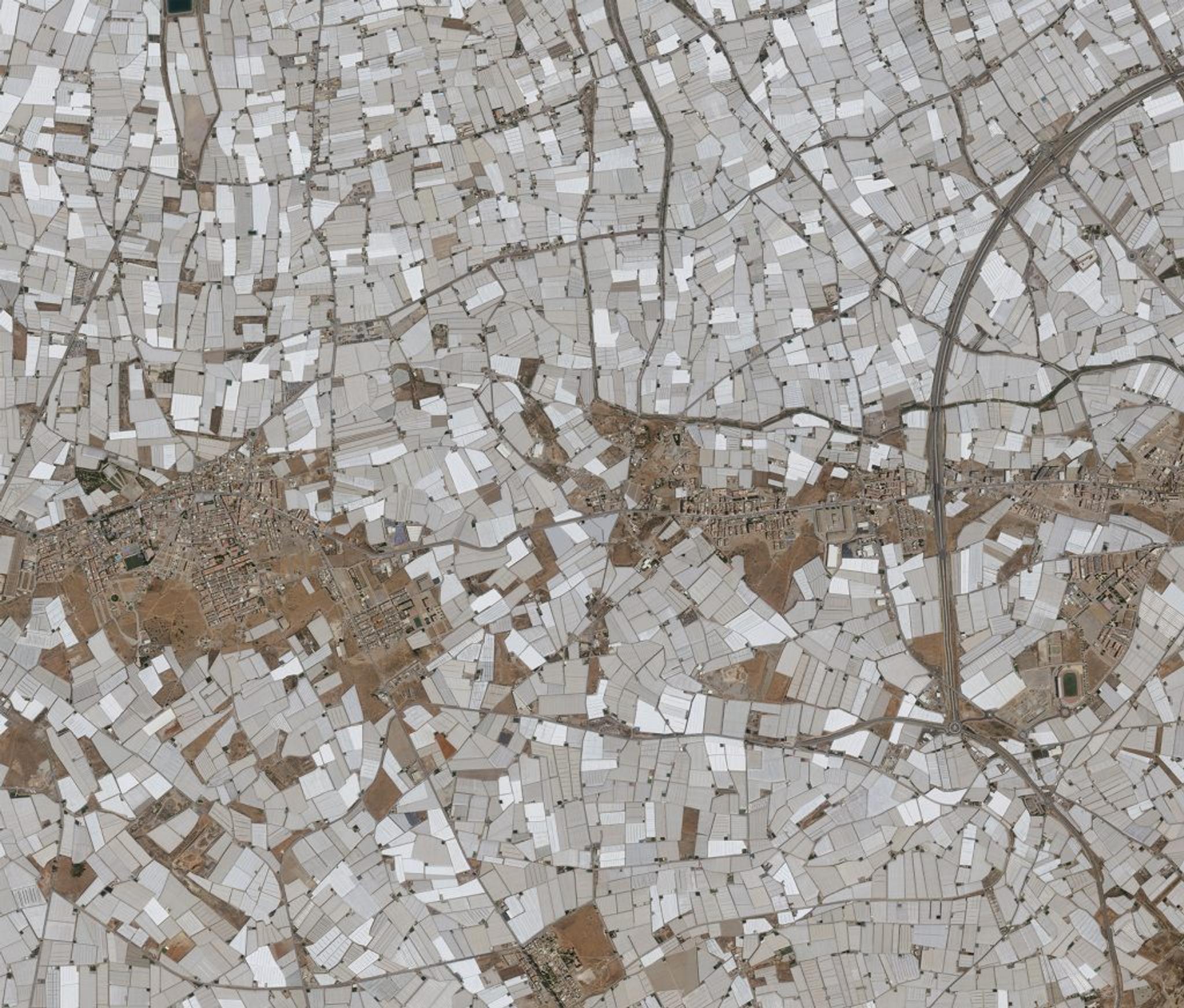
SkySat • Almería, Spain • July 17, 2022
At its simplest level, satellite data helps direct farmers to locate problems on their land. About 38% of Earth’s surface is used for agriculture. Meaning that any tool able to condense physical space—from tractors to satellites—is invaluable. In order to monitor these vast stretches of land for weeds, pests, disease, and nutrient stress, farmers turn to aerial imagery for a broader perspective. Like nitrogen before it, satellite data is an input that can boost yields and save farmers money.
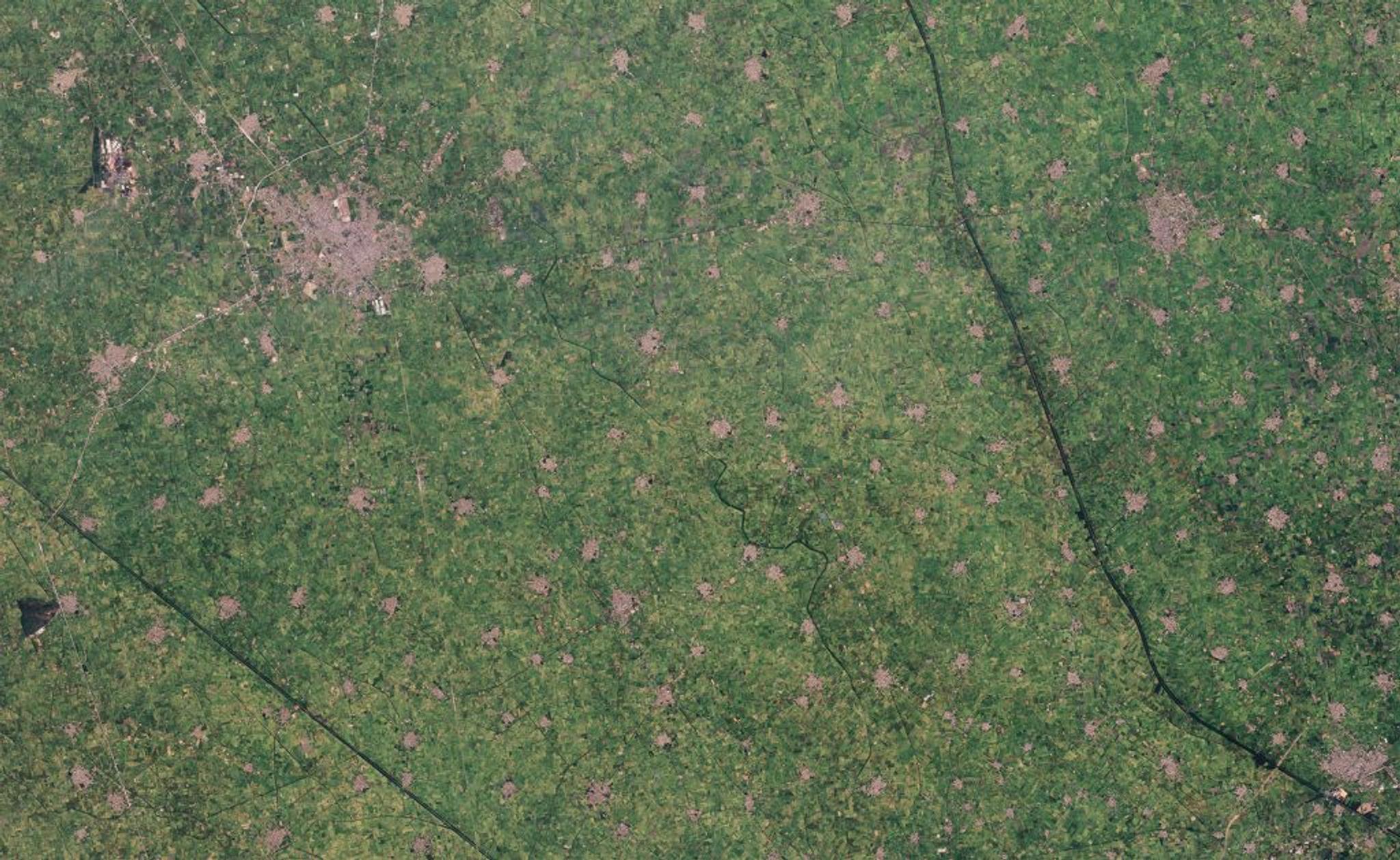
PlanetScope • Punjab, India • March 26, 2023
Worms present a major problem not just on Dune’s Arrakis but on Earth too. Nematodes are microscopic parasites that lurk in the soil to feed on crop roots and are responsible for global damages totaling $150 billion every year since they’re tough to catch. So we partnered with Syngenta to help create a digital nematode diagnosis and mapping tool to arm Brazilian soybean farmers with a powerful dataset to fight these armless pests.
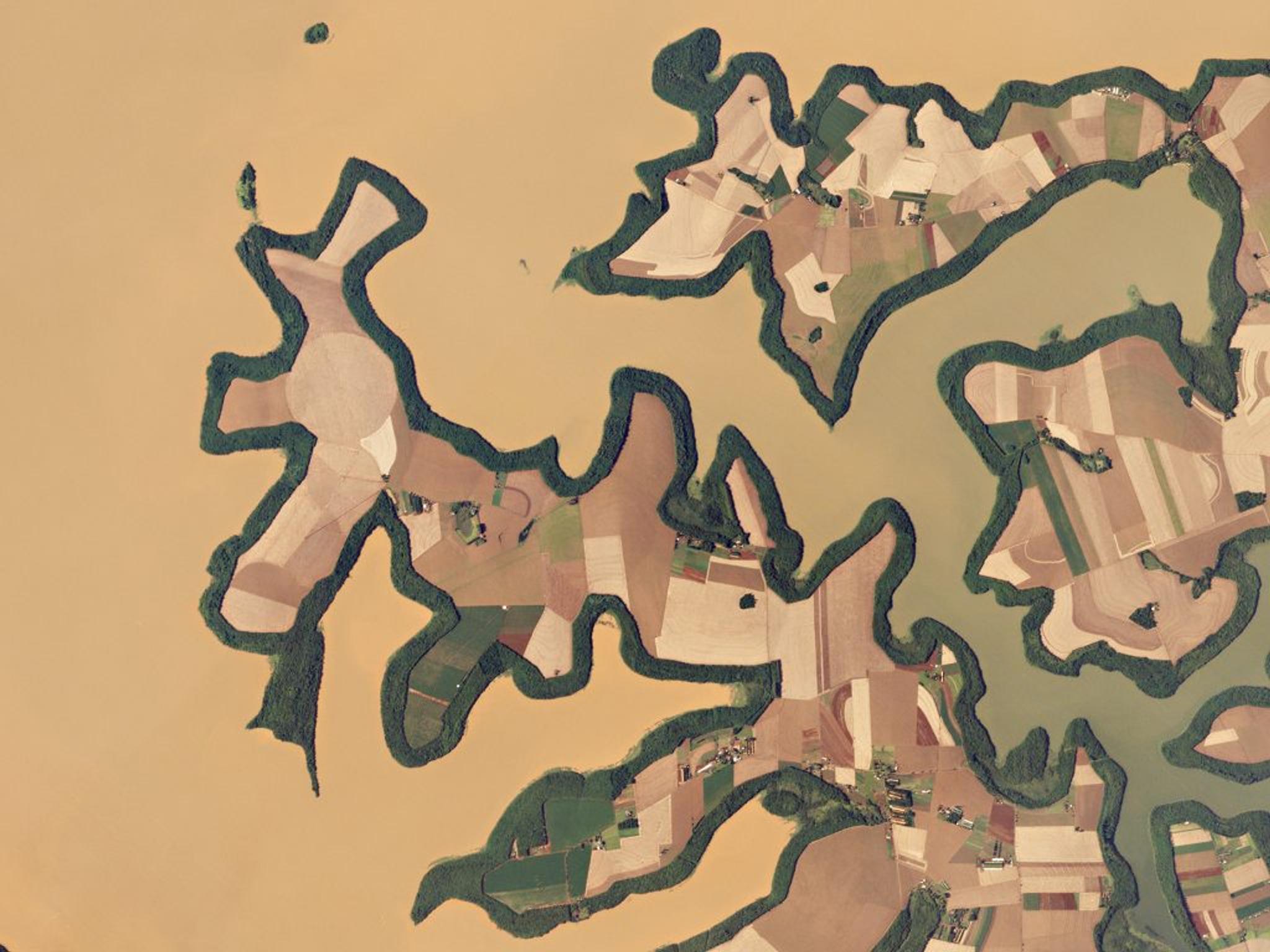
PlanetScope • Lago Itaipu, Brazil & Paraguay • January 27, 2016
Have you ever wanted to trace the perimeter of a field and estimate its yield? Of course you have. Field Boundaries is a product that does just that. All in all, this tool supports benchmarking, the tracking of farming activities, and compliance with regulations. The fact that it gives the Earth a cellular appearance is just a bonus.
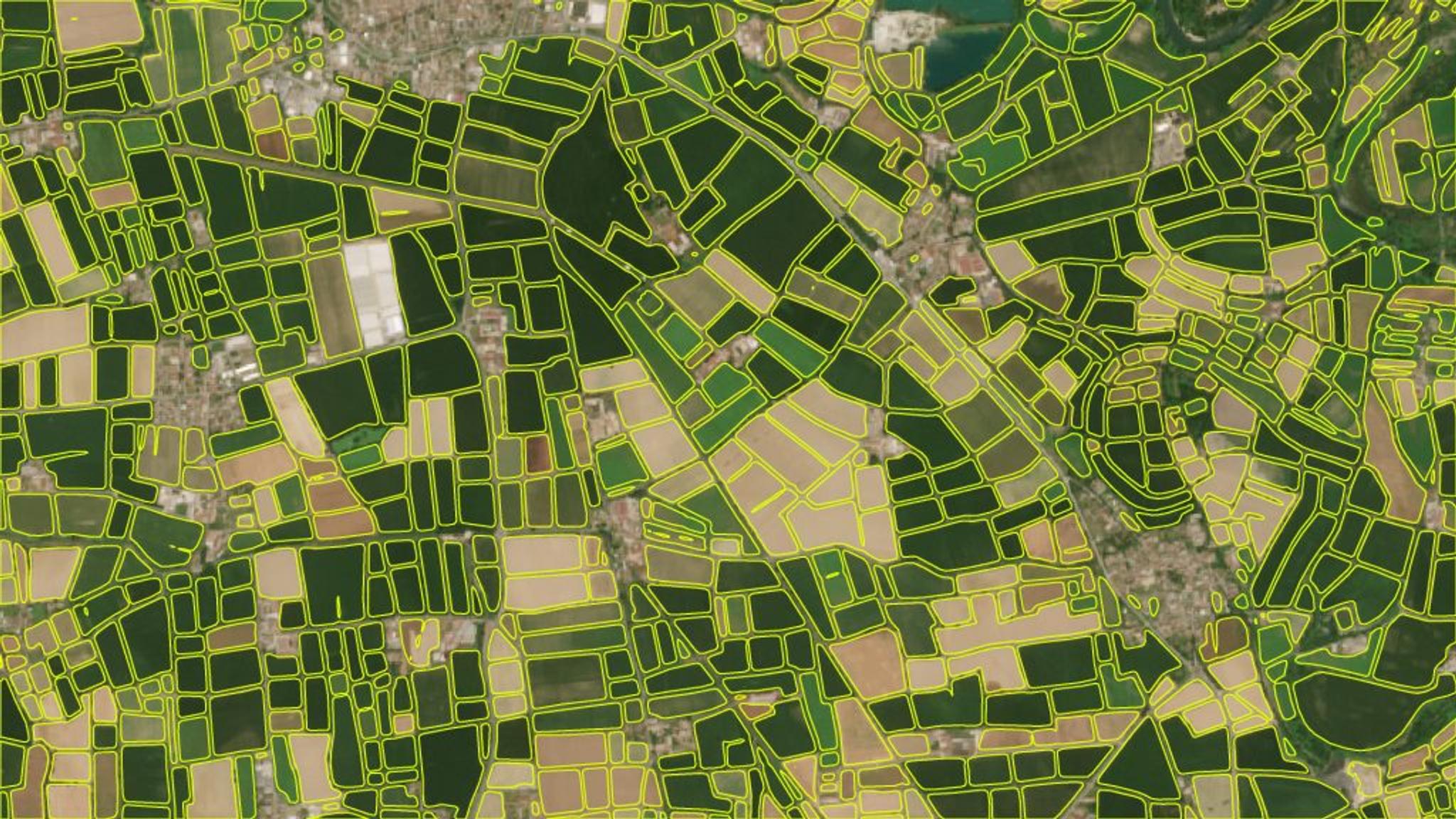
Sentinel 2 • Field boundaries product, Codogno, Italy • June 25, 2023
To the dismay of every houseplant owner and industrial-scale farmer alive, there’s no one single indicator of crop health. But calculating how a field’s biomass is changing over time is probably the best approximation you’ll get. Our Crop Biomass Planetary Variable gives agronomists a snapshot of their—you guessed it—crop’s biomass every day so they can estimate how their crop is doing and get ahead of pests, diseases, and nutrient deficiencies as fast as possible.
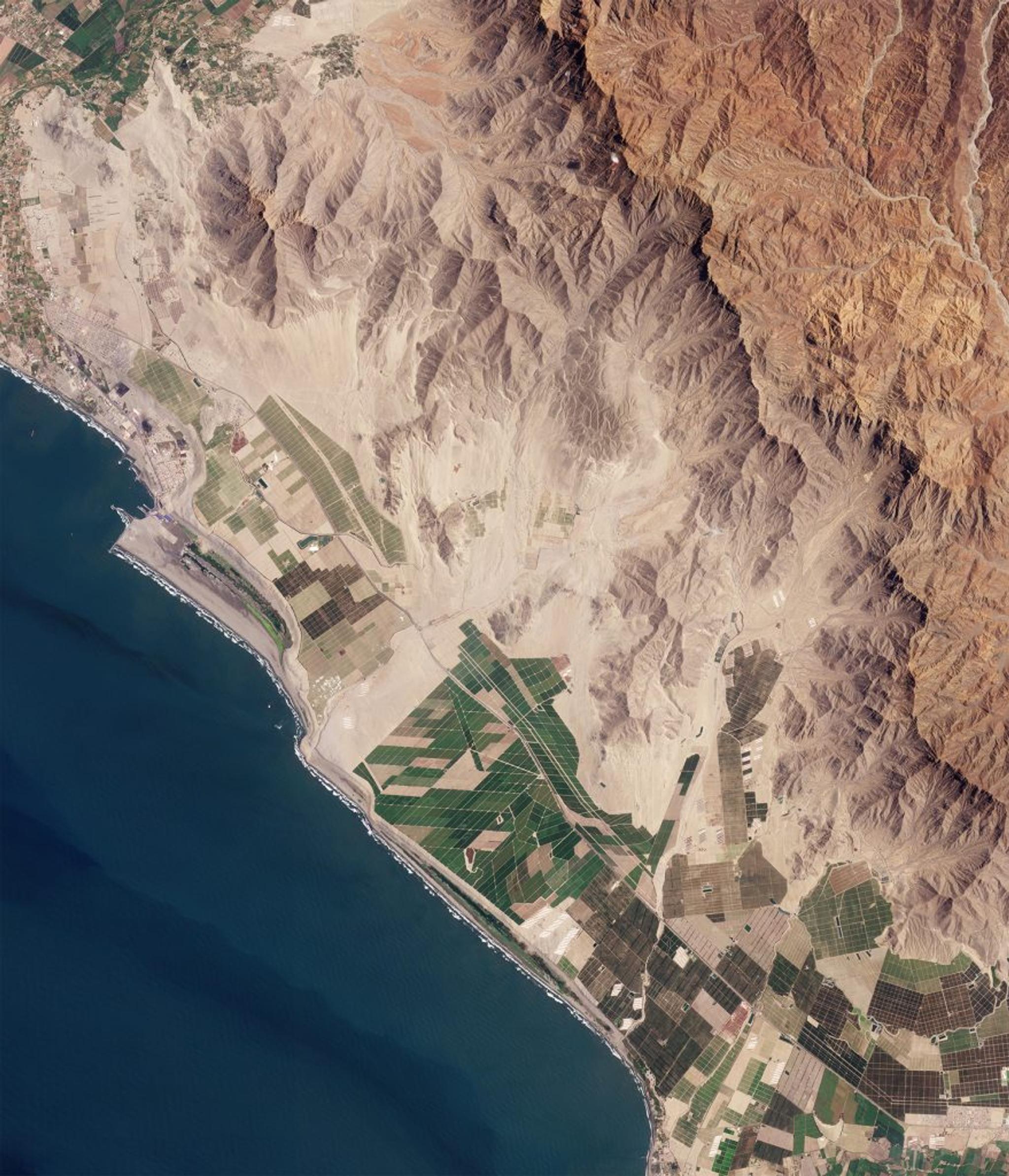
PlanetScope • Salaverry, Peru • February 27, 2024
Changes to the food system in one area have ramifications in others, which is partly why agriculture is often targeted during conflicts. So when Russia invaded Ukraine just over 2 years ago, experts worried about food security. To help alleviate food shortages and global disruptions, NASA Harvest paired satellite Basemaps with environmental and economic data to forecast how wheat harvests would be impacted and give stakeholders time to respond.
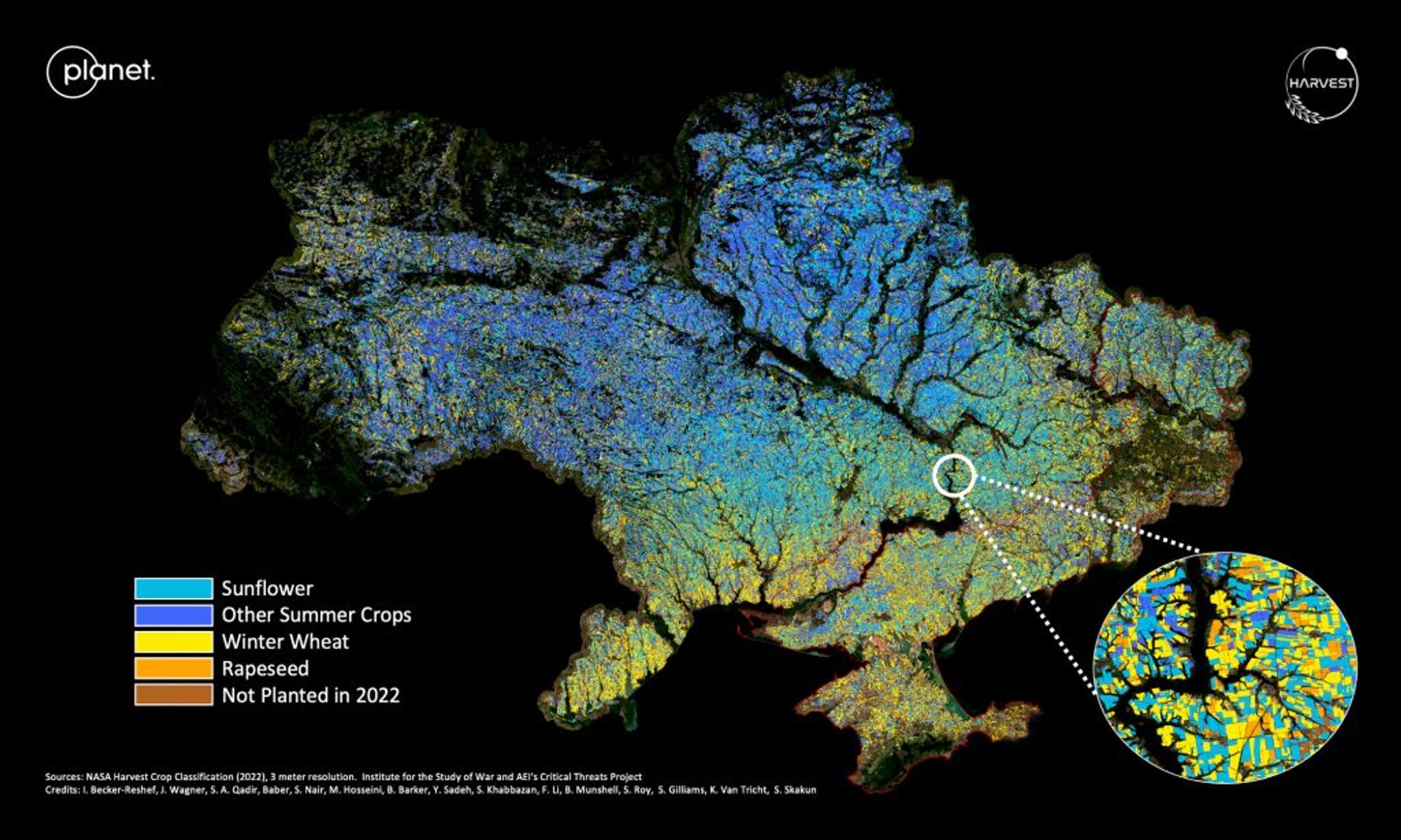
It’s nearly spring, which means farmers in the northern hemisphere have begun planting and ones in the south are harvesting. As they gear up for the season, we’re helping them do what they can to convert those inputs into greater outputs. The more ways we discover how to sustainably produce more using less, the better off we’ll be. The demand on agriculture production is only going to intensify in the coming decades as global populations grow and external pressures mount. But we can ensure that the system also gets more precise, optimal, and equitable. It’s just a matter of selecting the right inputs.

Ready to Get Started
Connect with a member of our Sales team. We'll help you find the right products and pricing for your needs.

